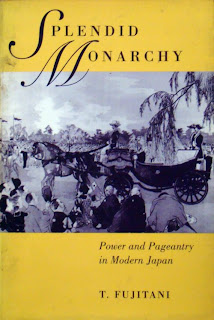The rice harvest has been underway for a few weeks now. Mostly it's done on weekends or holidays, as most rice farmers have full time jobs doing something else. Some people use combine harvesters that cut the rice and strip the grain in one operation, and some just cut the rice and let it dry.
Temporary drying racks made from Giant Bamboo are a common sight now.
In a village up in the mountains near Iwami Ginzan, the farmers build an unusual support to hold the drying rice. people come from all over to photograph it.
The rice is taken to the mill building that every settlement has. The motors hum non-stop for weeks as the rice is hulled. Behind the shed the rice husks collect into piles. The husks are used as mulch in our vegetable gardens.
It is often said that Japan's grossly ineffecient rice harvest is funded by the LDP as a way of wooing the rural vote - a rural vote can be worth 3 or 4 city votes-, but I think there is another reason. The money the farmers receive doesnt stay with the farmers, it ends up in the coffers of the zaibatsu. Rice farming is completely mechanized, with every farmer owning many pieces of equipment, often only used once a year. As well as the equipment manufacturers, the chemical companies also make a fortune as Japanese farmers use a LOT of chemicals.













